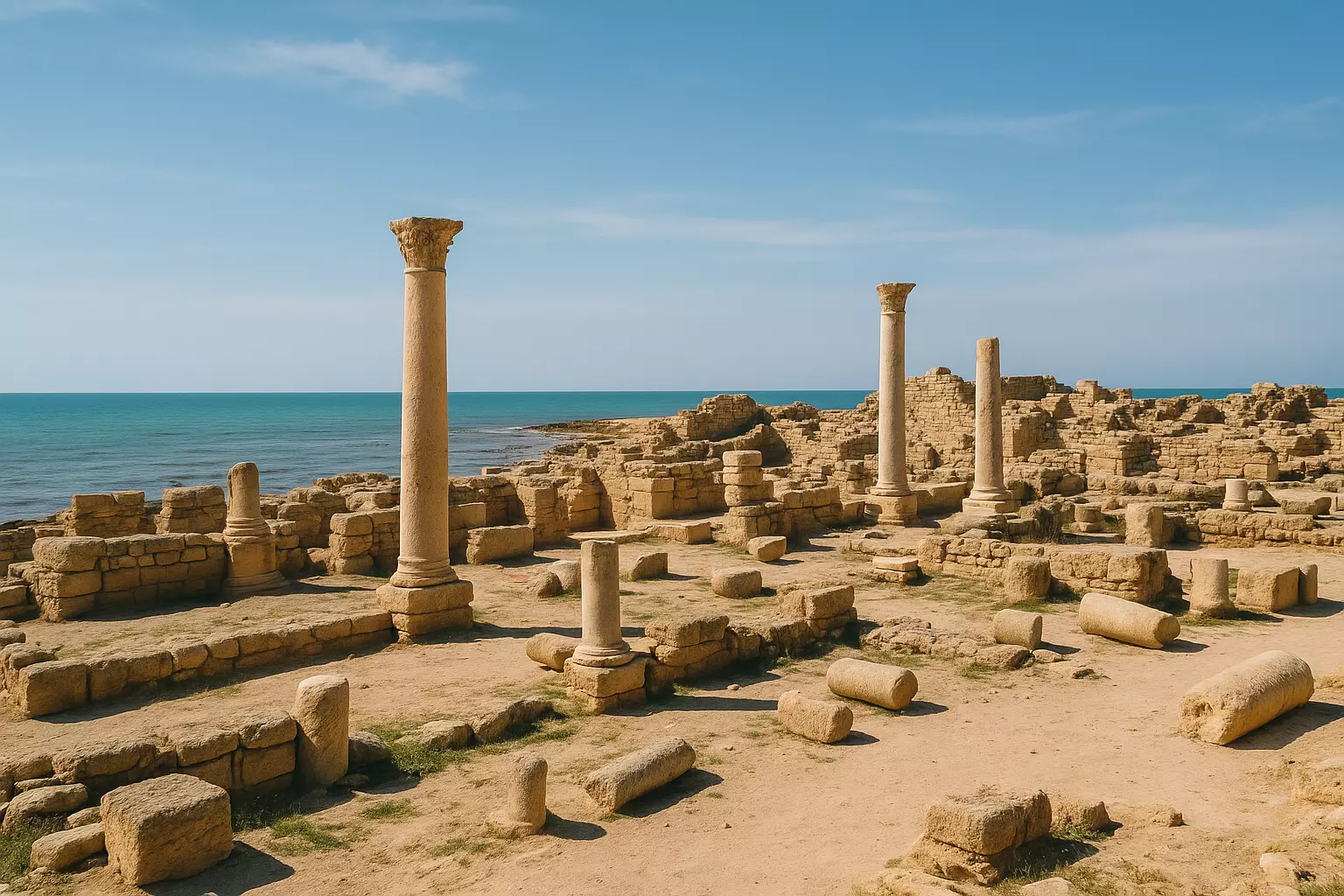Meninx Archaeological Site: Tracing Djerba’s Ancient Roman City (2025 Complete Guide)
Meninx, once a prosperous Roman city on the southeast coast of Djerba, thrived between the 1st and 4th centuries AD. Today, its ruins reveal the island’s deep ties to Mediterranean trade, purple dye production, and Roman culture.

- Introduction: Why Meninx Matters
- Historical Background
- Meninx and the Purple Dye Economy
- What to See Among the Ruins
- Archaeological Discoveries
- Meninx in the Roman World
- Practical Visitor Tips
- FAQ
Introduction: Why Meninx Matters
Meninx is not just a forgotten archaeological site — it was once the capital of Djerba in Roman times and a major urban hub of the southern Mediterranean. Stretching over several kilometers along the coast near El Kantara, Meninx combined commerce, culture, and architecture in a city that rivaled other North African Roman centers.
Today, while much remains buried under sand, walking through Meninx offers a unique opportunity to connect with 2,000 years of history, with ruins scattered by the sea and pottery fragments still visible on the ground.
Historical Background
Meninx flourished during the 1st to 4th centuries AD. Ancient historians such as Pliny the Elder and Strabo mention the city, particularly in relation to its wealth from the production of purple dye extracted from murex shells. At its peak, Meninx may have housed tens of thousands of inhabitants, making it one of the largest cities in the region.
With the decline of the Roman Empire and shifts in trade routes, Meninx lost its prominence by the 5th century. Over centuries, sand and erosion covered much of the site, preserving its remains for modern archaeology.
Meninx and the Purple Dye Economy
Meninx’s fame came from its production of Tyrian purple, a luxury dye made from the murex shell. This dye, known for its deep violet hue, was so expensive it was reserved for emperors and elites of Rome.
Archaeologists have uncovered vast piles of crushed murex shells around Meninx, proving the city was a center of large-scale dye production. This industry made Meninx wealthy and integrated it into Mediterranean trade networks from Rome to Alexandria.
What to See Among the Ruins
- Bath complexes: Remains of Roman baths with hypocaust (underfloor heating) systems.
- Mosaics: Fragments of intricate floor mosaics depicting geometric patterns.
- Amphorae and pottery: Ceramic jars once used to transport olive oil, wine, and dye.
- Columns and capitals: Scattered remnants of temples and public buildings.
- Coastal ruins: Foundations of ancient warehouses and harbors by the sea.
While Meninx is not a fully excavated site like Carthage or Dougga, its open and untouched character makes it an atmospheric place for exploration.
Archaeological Discoveries
Excavations at Meninx began in the 20th century but remain limited. Researchers from Tunisia, Germany, and France have found amphorae, coins, statues, and mosaics, now preserved in museums in Djerba and Tunis.
Satellite surveys suggest that much of Meninx remains buried. Future excavations may uncover streets, temples, and a forum, shedding new light on Djerba’s role in Roman history.
Meninx in the Roman World
Meninx was strategically located along maritime trade routes linking Africa, Italy, and the Middle East. Its exports included olive oil, ceramics, and purple dye, making it a wealthy and cosmopolitan city. The presence of baths, temples, and paved streets indicates a sophisticated urban culture, deeply connected to Rome.
Practical Visitor Tips
- Location: 7 km southeast of El Kantara, accessible by car from Midoun in 25 minutes.
- Best time to visit: Morning or late afternoon for cooler weather and soft light for photography.
- Entry: Free, as the site is open and unguarded — but respect the ruins.
- What to bring: Sturdy shoes, water, hat, sunscreen.
- Duration: 1–2 hours to explore at leisure.
FAQ — Meninx Archaeological Site
When was Meninx founded?
Meninx was established in the early Roman period and peaked between the 1st and 3rd centuries AD.
What was Meninx famous for?
Its purple dye industry made from murex shells, traded across the Mediterranean.
Can you still see mosaics?
Yes, though many are fragmentary, several mosaic floors remain visible on-site.
How big was Meninx?
The site extends over 2 km along the coast, making it one of the largest Roman settlements in southern Tunisia.
Last updated: August 20, 2025
Author: Djerba Inn Hotel
